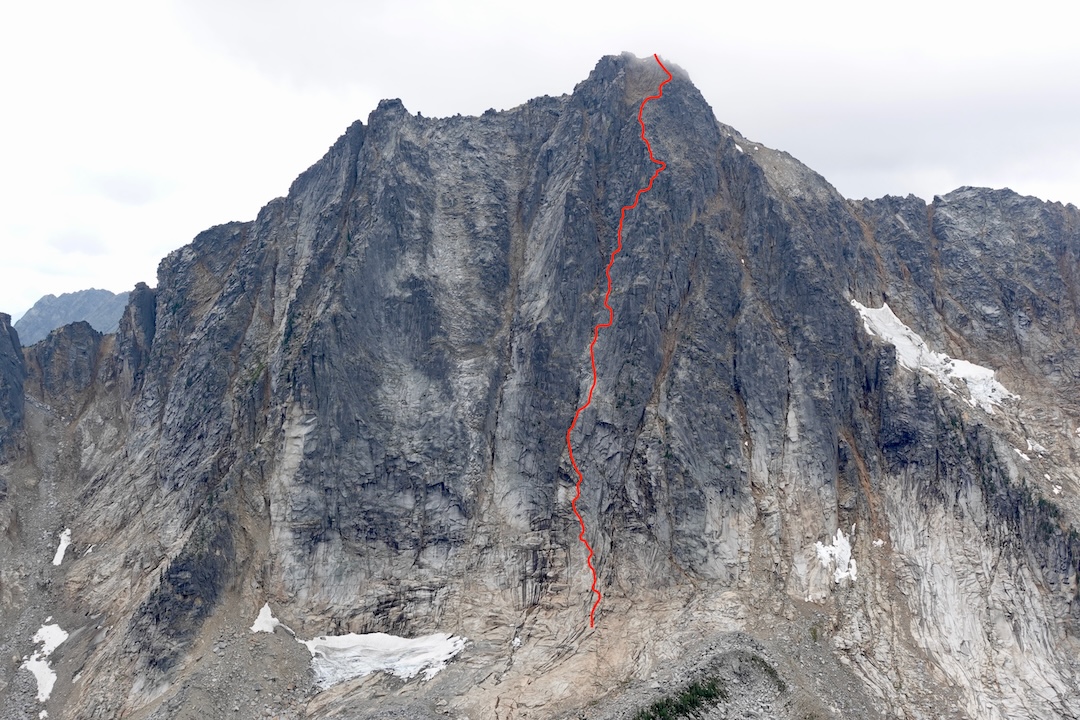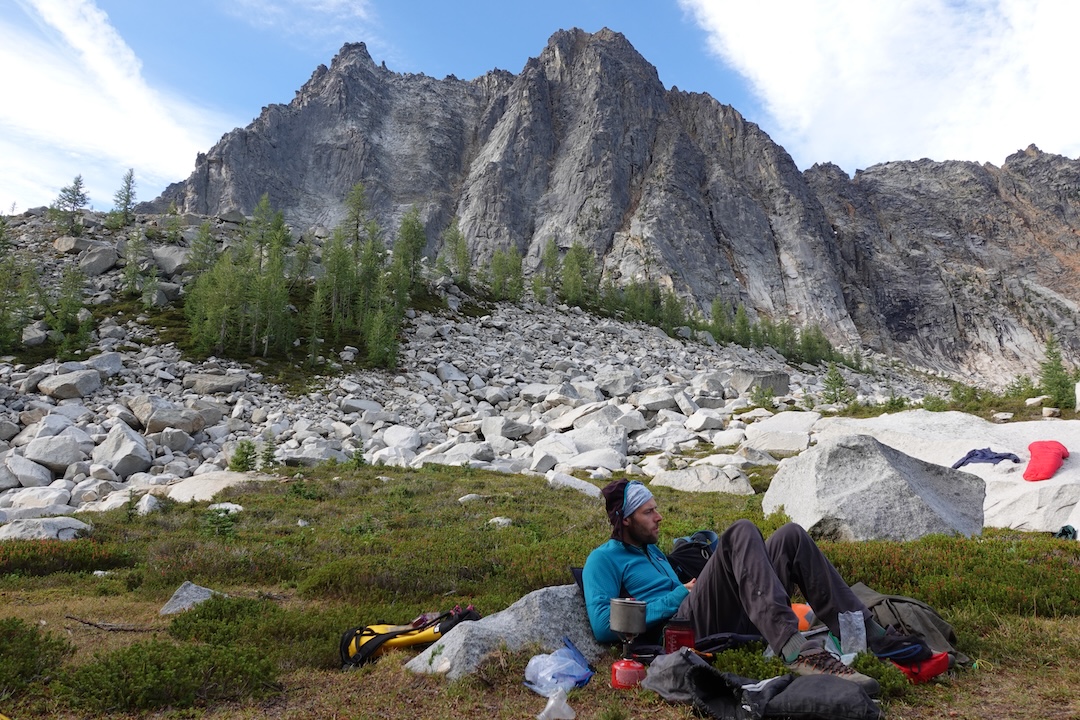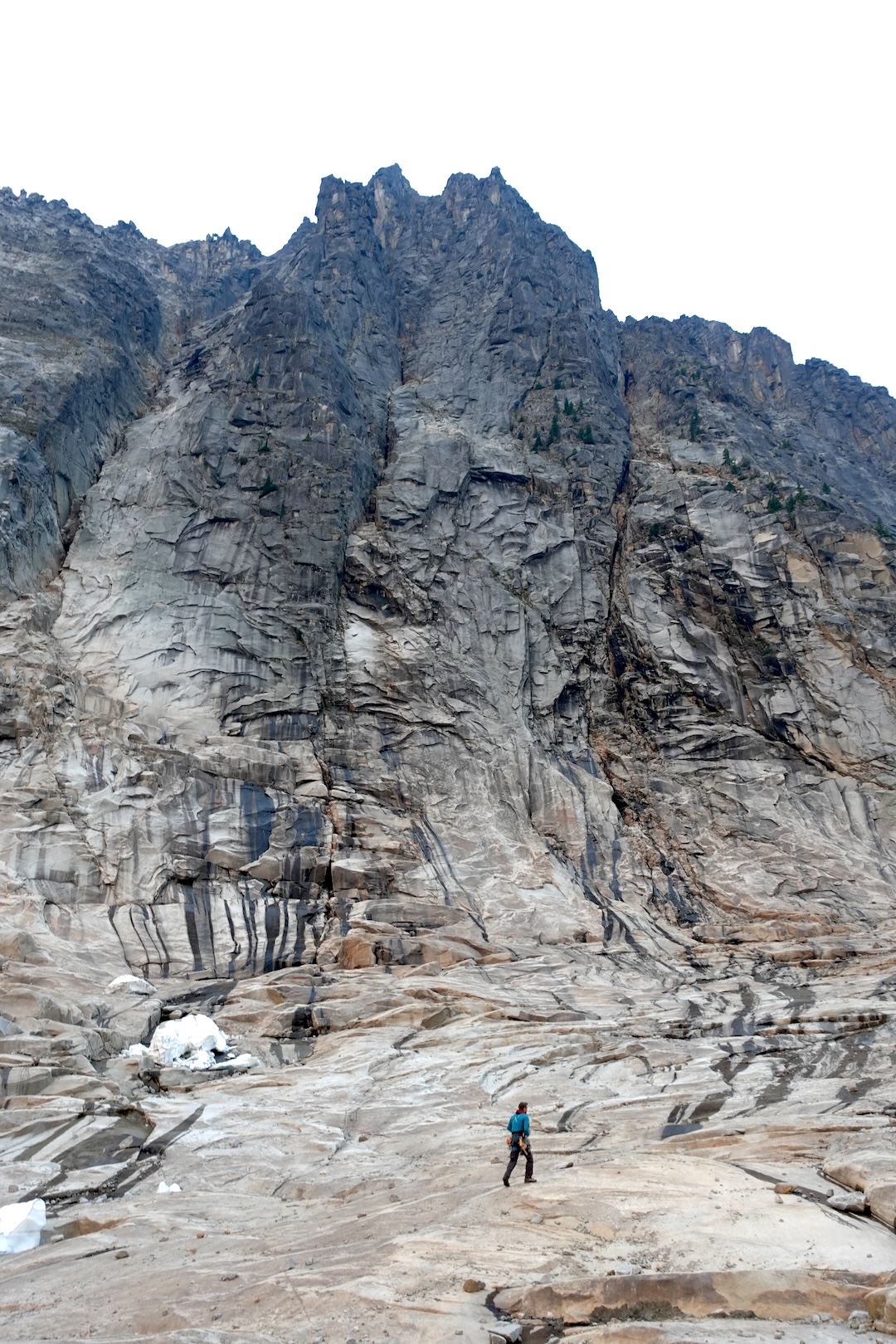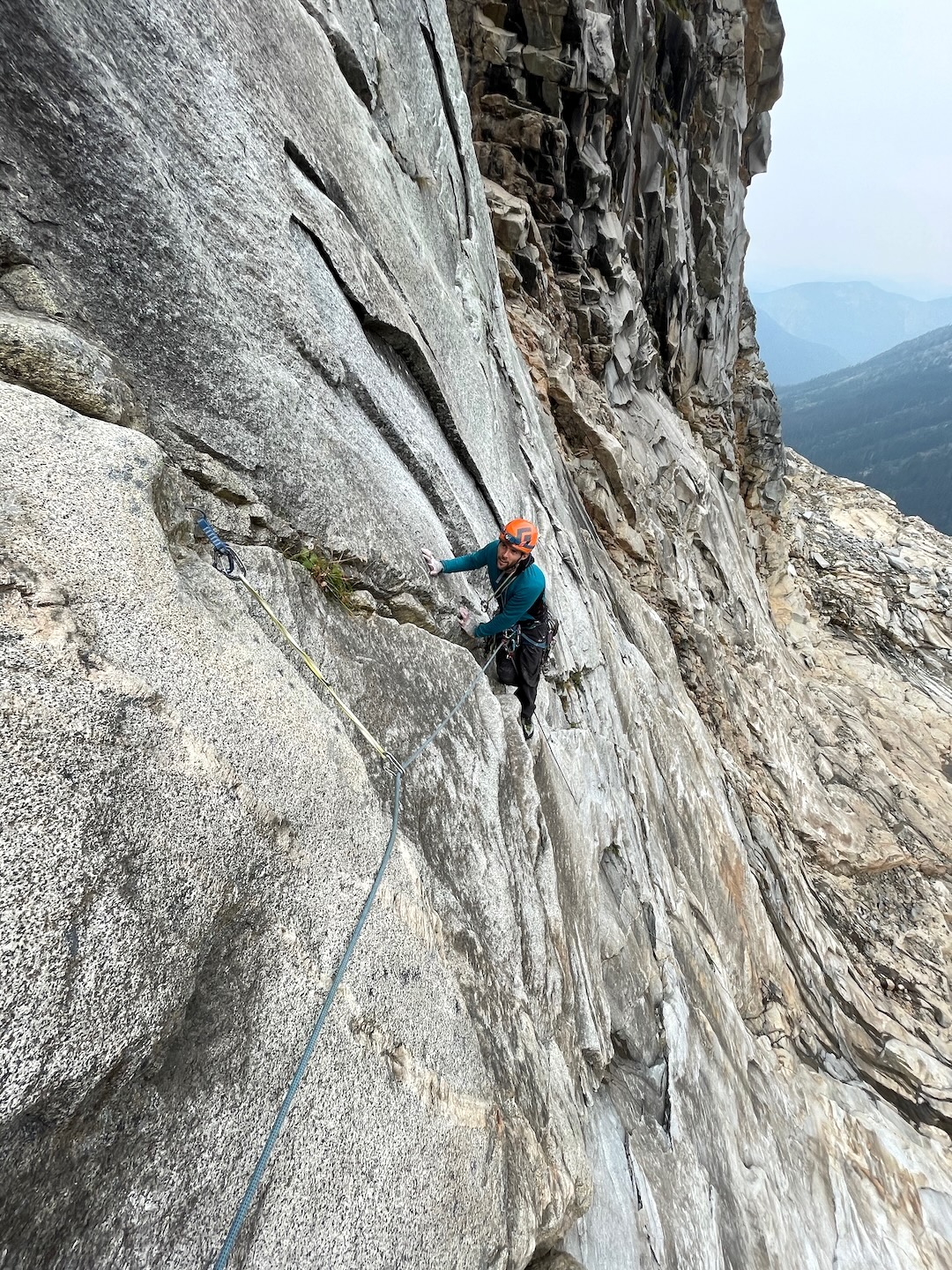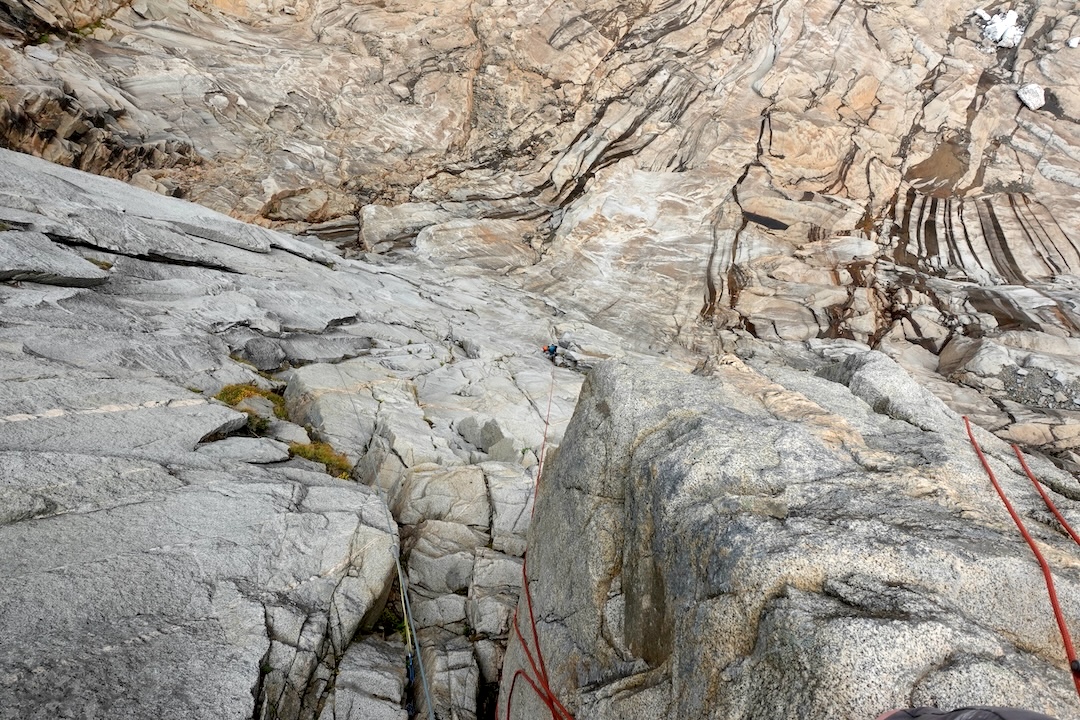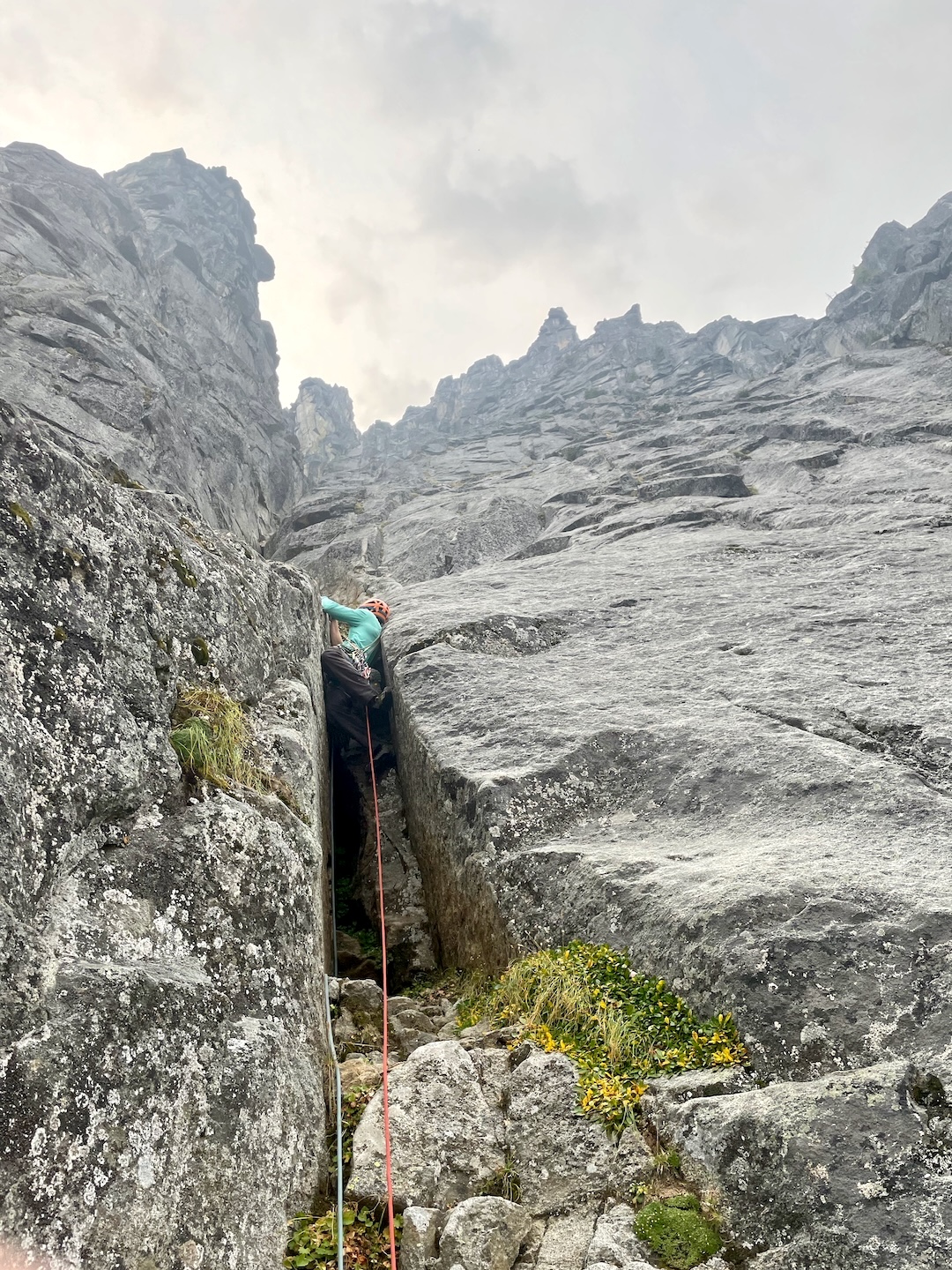Castle Peak, North Face, Ripped Settee
Washington, North Cascades
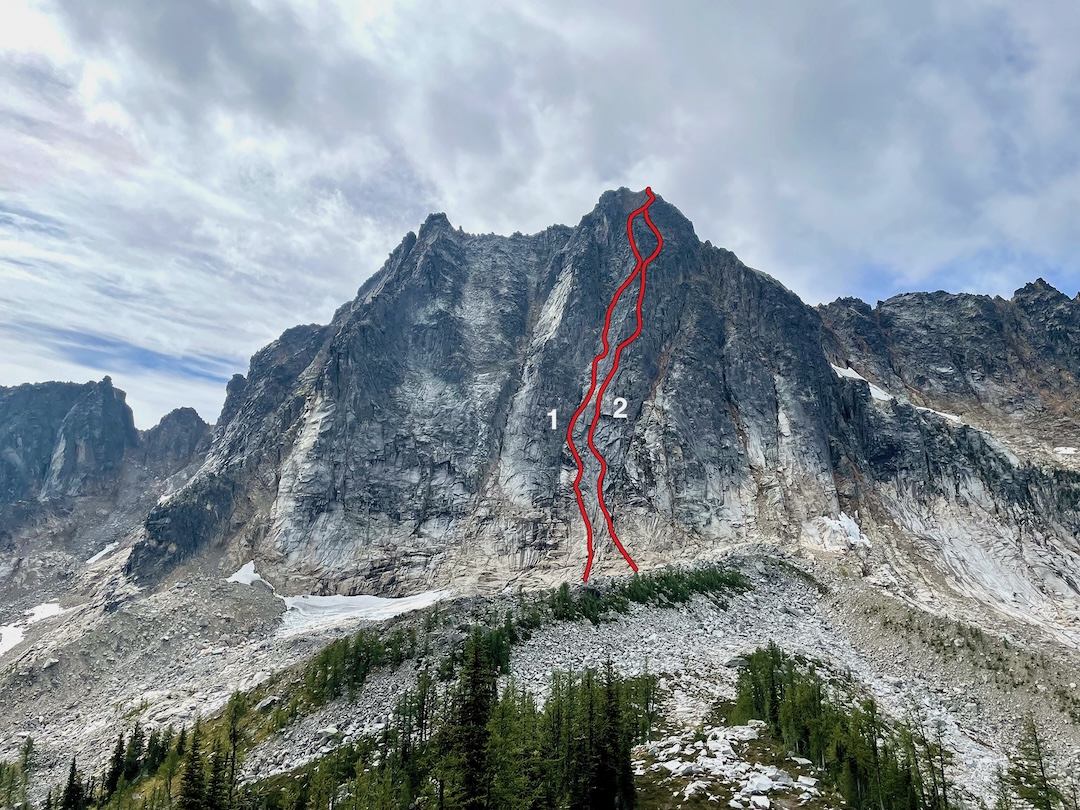
On September 8, Sean Reckert and I climbed what we think is a new route on the central buttress of the north face of Castle Peak (8,306’) in the Pasayten Wilderness. Our line, Ripped Settee (1,200’, 11 pitches, IV 5.12a A0), is east (climber’s left) of The Drawbridge, established in 2017 by Jason Schilling and Morgan Zentler at 5.10+ A1.
As reported by other parties, the rock on Castle Peak is high-quality granite, but with cracks occasionally plugged by moss. It reminded us of the Liberty Bell group to the south. By early September, the slabby bedrock at the base of the three main buttresses was ice-free. The unnamed glacier below the face is now limited to a small pocket under Castle’s eastern subsummit.
A large, M-shaped roof extends across most of the lower central buttress—the 2017 route surmounted this roof, and, with enough time, more lines might be found through this feature. With only one day to climb, we opted to bypass the roof on its left side by a series of thin, occasionally wet corners (to 5.11a), isolated ledges, and diagonal ramps. This section of rock was very compact, and the movement was beautiful. We then climbed the wide chimney separating the central and left buttresses for one pitch before pulling back onto the left side of the central buttress, which we followed to its apex. (The chimney section might be exposed to rockfall earlier in the season when snow remains.)
The route had a bit of everything: a squeeze chimney; a refrigerator-width pillar (5.11d) that required heel-hooking compression; a crux pitch (5.12a) that started with wide stemming and finished with a tips layback over a bulge; and a fabulous 5.7 panel of knobs near the top. We used one point of aid (A0) for a tension traverse on the fifth pitch when the 5.10 seam that Sean was leading blanked out and he switched to its neighbor ten feet to the right.
We finished the 11th and final pitch in the dark, scrambled up a fourth-class boulderfield to the summit, and walked off to the east. That evening we arrived back at the pretty campsite where we’d slept the night before, near a copse of alpine larches growing out of a lateral moraine.
The central buttress’s upper half has several ledges that can be followed climber’s right to moderate terrain, making our choice of line more a matter of fun than necessity. We found carrying a few pitons to be useful. The routes on the north face deserve more traffic.
—Spencer Gray


